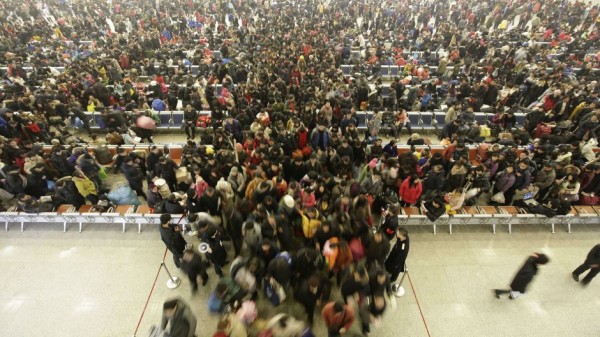The movement activity during the Spring Festival travel rush, known as "chunyun" in Chinese, has been tracked by Chinese search engine giant Baidu during the Year of the Sheep, providing information that adds further interest to the tourism data that has already attracted so much attention.
Baidu's monitoring for the Lunar New Year celebrations first started on Feb. 7, when the planet's largest holiday movement was set into motion.
An analysis of the Baidu interactive-map data, which is updated hourly, shows an increasing trend of reverse migration. That is, those people whose vocational commitments take them away from their home bases are being joined by their families in the prominent urban centers where they work or study, rather than the other way around.
Typically, city-based Chinese nationals would return home to reunite with their loved ones for the Spring Festival festivities.
However, the departure of migrant workers from their work bases followed the trends of previous years, and the Feb. 16 data revealed that Beijing, Shenzhen, Shanghai, Dongguan and Guangzhou were the top five cities in which the highest outflow of nationals exited the cities' boundaries. The outflow data is consistent with the labor statistics, as these locations are places of employment for a massive number of migrant workers.
In terms of influx, which will include the families who chose to join their relocated relations in urban centers, Chongqing, Ganzhou in Jiangxi Province, Beijing, Yulin in Guangxi Zhuang Autonomous Region, and Fuyang in Anhui Province were the top five cities. The nation's two busiest travel routes during the celebratory season were Shanghai to Lu'an, and Fuyang.
The Ministry of Transport expects that the total passenger flow for the chunyun period will exceed 2.8 billion person-times, representing a 3.4-percent growth beyond the overall flow in 2014.


